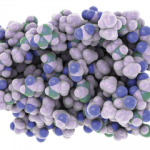 ACR CONVERGENCE 2021—Rheumatology is an exciting and rapidly advancing field, but it can be tough to stay up to date on the latest advances in basic science while maintaining a full-time practice, especially for those of us who are clinically focused. Michael B. Brenner, MD, EF Brigham Professor of Medicine, Harvard Medical School, Boston, and director of cell and molecular immunology, Division of Rheumatology, Inflammation and Immunity at Brigham and Women’s Hospital, Boston, provided a whirlwind review of the latest and greatest basic science research in rheumatology during ACR Convergence 2021 on Nov. 5, 2021.
ACR CONVERGENCE 2021—Rheumatology is an exciting and rapidly advancing field, but it can be tough to stay up to date on the latest advances in basic science while maintaining a full-time practice, especially for those of us who are clinically focused. Michael B. Brenner, MD, EF Brigham Professor of Medicine, Harvard Medical School, Boston, and director of cell and molecular immunology, Division of Rheumatology, Inflammation and Immunity at Brigham and Women’s Hospital, Boston, provided a whirlwind review of the latest and greatest basic science research in rheumatology during ACR Convergence 2021 on Nov. 5, 2021.
2021 Highlights
Dr. Brenner began by highlighting new insights into the mechanisms by which inflammation—specifically interleukin (IL) 1—contributes to cartilage damage in osteoarthritis (OA). Lee et al. described how IL-1 upregulates Piezo1, a mechano-sensing calcium channel receptor that renders chondrocytes more sensitive to deformation, microtrauma and strain. Thus, the effects of inflammation make chondrocytes more sensitive to injury and degeneration.1
Next, he drew attention to the newly defined adult-onset autoinflammatory syndrome VEXAS, which demonstrates that the ubiquitin-proteasome system plays key roles in inflammation and is “way more than just protein trash removal.”
Beck et al. used a genotype-first, phenotype-neutral strategy to identify patients with somatic ubiquitin-like modifier activating enzyme 1 (UBA1) mutations causing severe adult-onset autoinflammatory disease.2 VEXAS, named for some of its distinguishing features (i.e., vacuoles, E1 enzyme, X-linked, autoinflammatory, somatic), is most commonly identified in adult men. It can cause recurrent fevers, lung and skin involvement, and hematologic abnormalities that are often refractory to conventional immunosuppressive therapies.
Researchers were not able to identify the exact mechanism of disease in VEXAS, but noticed increased serum cytokine levels in these men. Dr. Brenner remarked that this is a “great example of a new scientific strategy that [may] be used to identify other syndromes.”
Dr. Brenner asked, ‘Is it possible that we might have missed what [may] be the most striking driver of the IFN signature [in lupus]?’
Dr. Brenner pivoted to the interferon (IFN) signature in lupus, challenging the audience with this question: “Is it possible that we might have missed what [may] be the most striking driver of the IFN signature?”
Caielli et al. described how mitochondrial retention in red blood cells drives a type I IFN pathway in severe lupus.3 Mitochondrial removal from red blood cells depends on a metabolic switch that results in activation of the ubiquitin-proteasome system and subsequent autophagy. Interestingly, many red blood cells in lupus patients retain mitochondria. The authors noted striking clinical correlations between mitochondrial retention in red blood cells with higher Systemic Lupus Erythematosus Disease Activity Index (SLEDAI) scores, renal disease and higher IFN scores.



